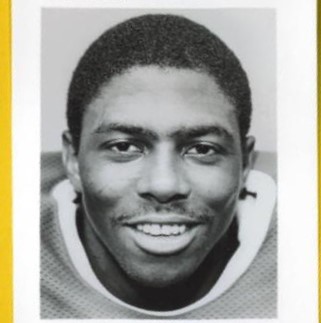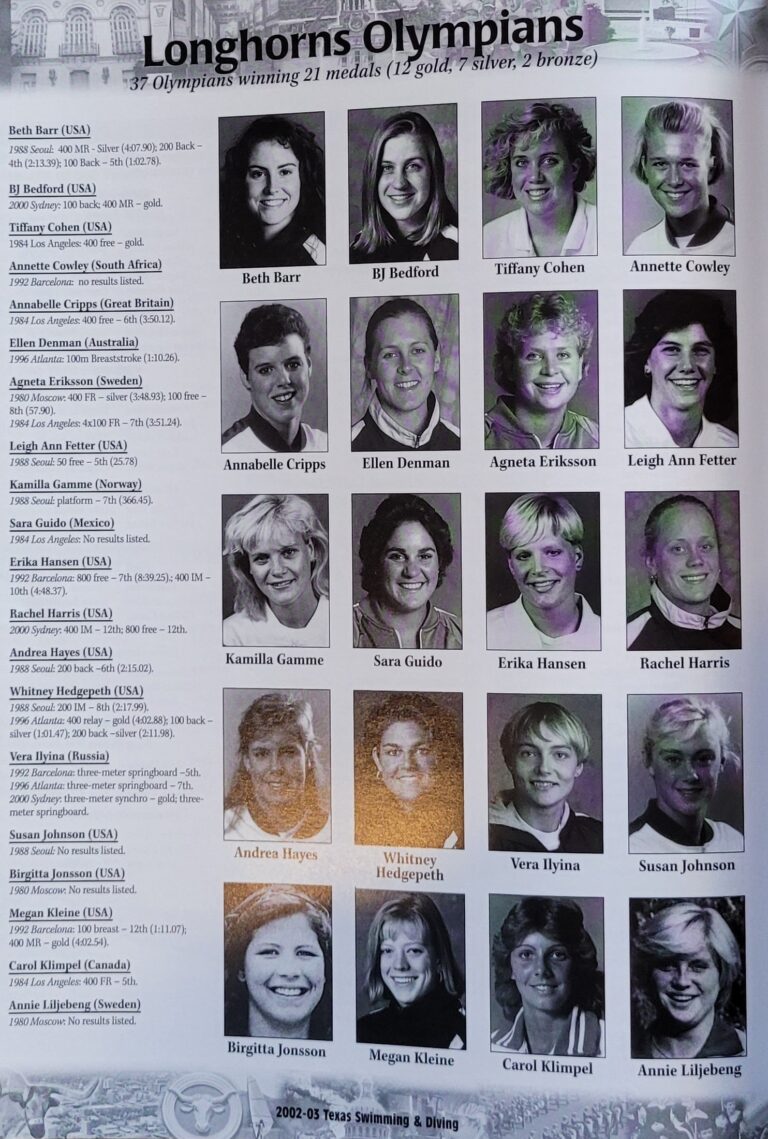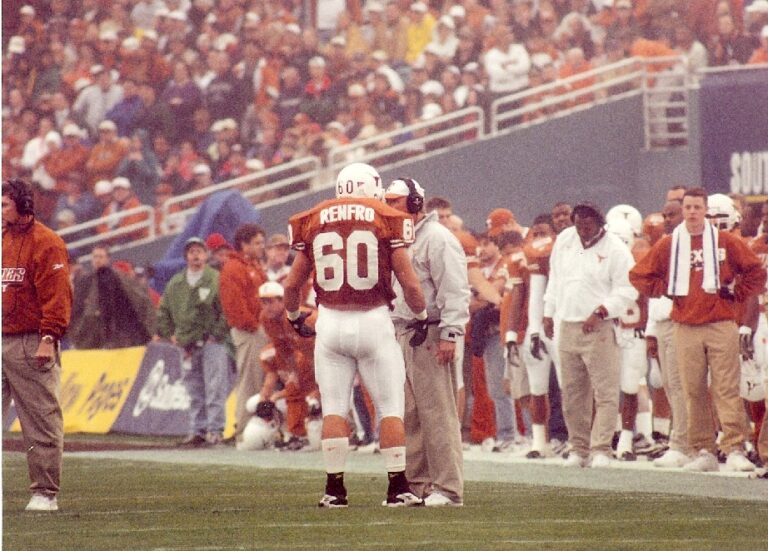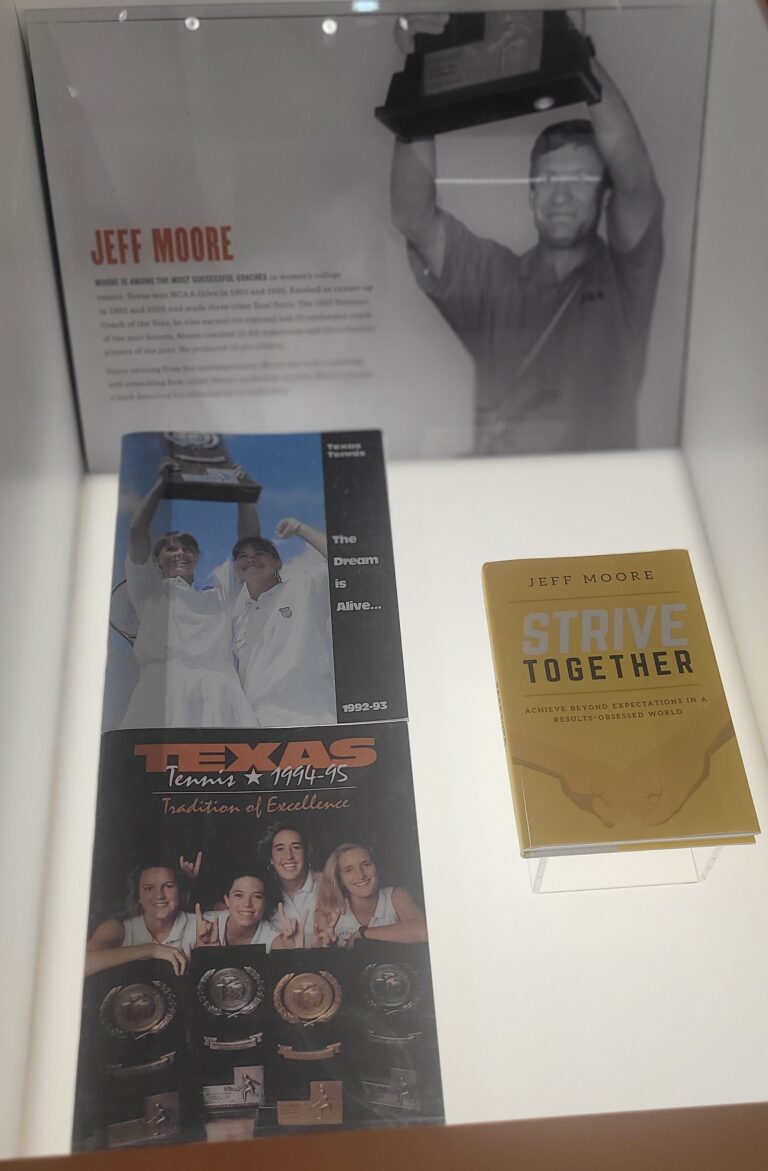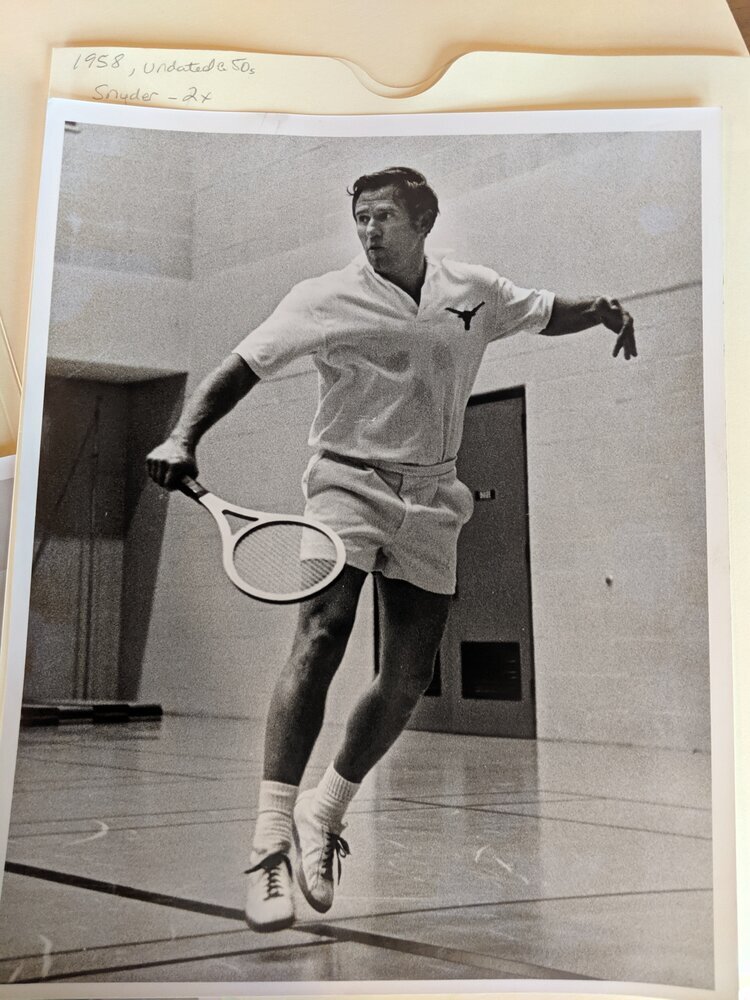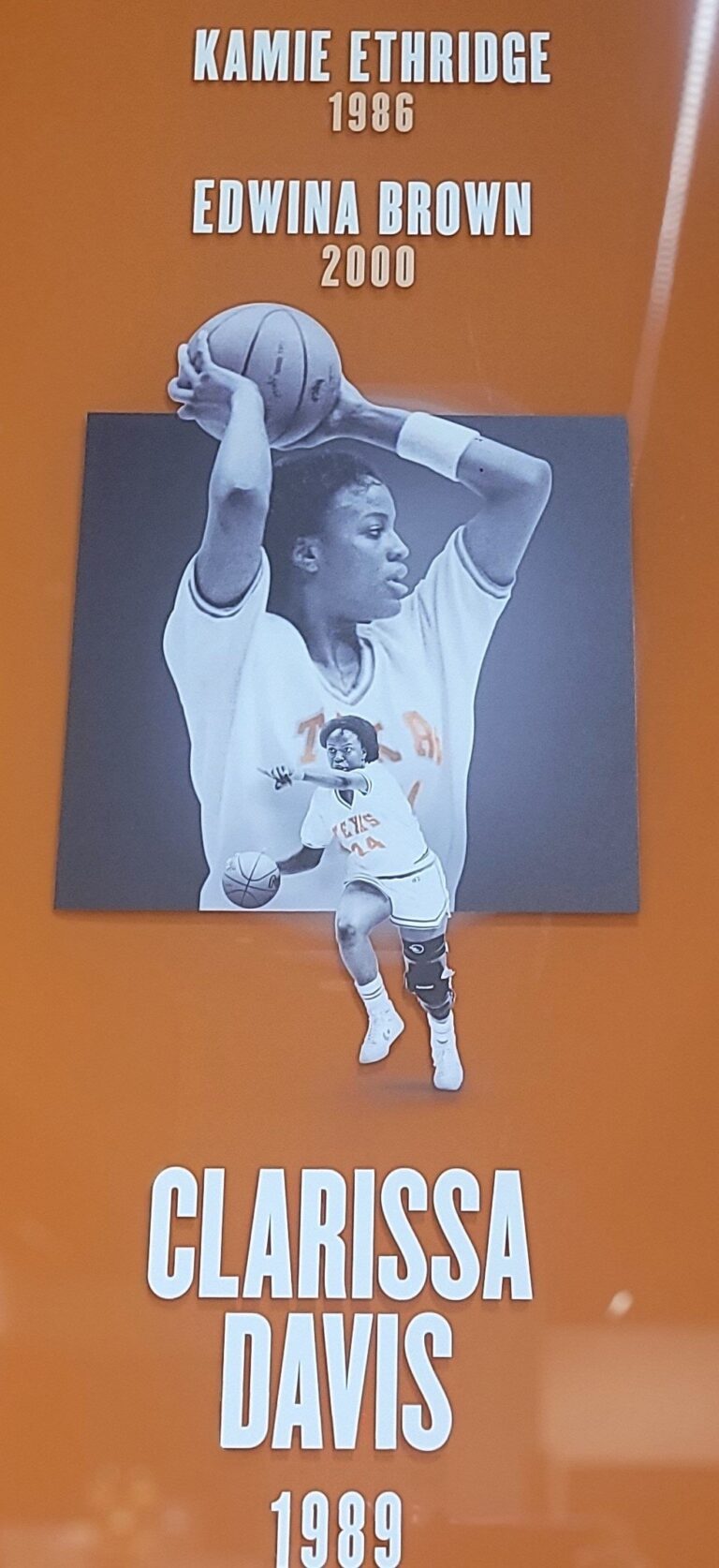Women’s Golf T-Ring Reflections
Michiko Hattori has a storied collegiate career at the University of Texas:
-
Four-time All-American
-
Southwest Conference Player of the Year (1987-91)
-
Two-time National Collegiate Golfer of the Year
-
1988-89 National Golf Coaches and Golf Week National Player of the Year
-
Honda Broderick Award Player of the Year (1989-90)
-
Southwest Conference Player of the Decade for the 1980s
-
Led UT team to three top-10 finishes at the NCAAs
-
UT record three top-10 individual NCAA finishes
-
winning 10 individual titles , finishing in the top ten in 38 of 40 events during her 4 years as a Longhorn
-
Three top 10 finishes at the NCAA Women’s Golf Championship (tied for 1st at the end of regulation in 1989 but lost lost in the playoff).
Before all of these honors and accolades a perfect storm of events Leads Hattori down a burnt orange brick road.
In her pre-teens and early teens Machiko did not like golf, but by 16 years of age Machiko’s golf maturity was evident, and she understood her destiny. Golf was part of her genetic make-up. Her mother was the Japanese amateur champion.
In Seattle, Washington in 1984 Coach Weis saw Hattori swing a club for the first time, and the road to Austin began.
In 1985 Hattori won the US amateur and the Asian amateur championship. In her travels, she met Tom Kite, the ex-Longhorn who played on two national championship golf teams at Texas and who was a prominent golfer on the PGA circuit. Hattori respected Kite and listened to him during the next two years as he symbolically whispered in Machiko’s ear “The stars at night are big and bright (clap, clap, clap) deep in the heart of Texas.”
In 1986, Hattori became the first golfer to win medalist honors at the U.S. Women’s Amateur and the U.S. Girls’ Juniors in the same year.
Recruiting, honors and Challenges
Her team won their unprecedented third consecutive Southwest Conference team title, and Hattori was named SWC player of the year.
In March 1989, Machiko was considered one of the best women amateur golfers in the country. The NCAA ranked her #2, but while she came very close once, Michiko never won an NCAA championship tournament.
Machiko’s greatness is as a Longhorn sports pioneer. Hattori’s accomplishments are a Reminder of All That is In Sports And Far Beyond. She has earned her equity stake in Longhorn Sports history. She has Shaped The Present And Empowered The Future and set a very high bar for future Longhorns.
Coach Weis
Little information exists about the early years of the Women’s Golf Program at the University of Texas prior to the hiring of Pat Weis as a P.E. teacher in 1957. Weis was instrumental in organizing the Texas women’s golf club in 1969, which competed non-competitively at the collegiate level until 1972. With the passage of Title IX in 1972, Weis was hired as the varsity women’s golf coach.
With increased financial support from the university and the leadership of new head coach, Pat Weis, UT Women’s Golf team began their inaugural season in 1972-1973. Weis, considered “The Architect of the Texas Longhorn Women’s Golf Team” by the Texas Legacy Support Network, coached the women’s golf team to win seven Southwest Conference Championships over the course of her twenty-one-year tenure from 1972 to 1993.

FROM THE BOOK LIFE OF COACH BY MICKIE EDWARDS
COACHES ARE REAL PEOPLE
Piper Wagner l (Longhorn golf 1987-1992) Left the Longhorn nation too soon. She was diagnosed with cancer in March 2011 and passed away in August of 2014.
COACHES ARE REAL PEOPLE
Piper Wagner
Piper Wagner l (Longhorn golf 1987-1992) Left the Longhorn nation too soon. She was diagnosed with cancer in March 2011 and passed away in August of 2014.
Coaches are people, too
In an emotional moment, Coach Weis could not speak because a friend has passed away so she touched Piper. Weis’s eyes teared up, and she could not speak so Coach touched her heart with her hand.
Piper said, ” I was shocked to see her that way”. “In college, all I thought about was me”. “People like Coach, they weren’t real people. Looking back on it now, it is so strange! We were just kids, completely self-centered. I certainly didn’t think about her having a life outside of coaching our team”.
Piper’s comments are very insightful and reflect many coach/student-athlete relationships. I experienced the same epiphany with Coach Royal after he suffered a family tragedy. It was such a surprise for me to see him grieve. Like Piper- as a young, self-centered person- I was shocked at Coach Royal shedding tears.
Bari Brandwynne
Coach Weis sent Bari a letter stating that U.T. could not recruit her or pay her way to the campus for an interview. Bari understood this distorted rule written by the AIAW, so at 17, she drove from Las Vegas to Austin with her two dogs and met with Coach Weis. Bari became the youngest Longhorn golf member on the team.
The photos are of Bari Brandywine with Coach Weis, Bari’s team, and an action shot of Bari found in the “Cactus.”. In December 2019, Bari added to her story, “I was already recruited to play for Stanford…but was only receiving a partial scholarship. At the last moment, the coach called me up (because of my Vegas connections), and I told my mom that I needed to check out Texas before I committed to Stanford…the next morning, I got a trip ticket from AAA.
I drove with my two dogs in a day and a 1/2, walked into her office (with my dogs), and she yelled across the room… (in her Texas hard, loud accent)… “Well, this is the first time I have ever had a recruit walk into my office with two damn dogs!” I fell in love with her in two seconds… I called Bruce At Stanford and said my heart goes to Texas. I’ve been a Longhorn fan for life! The funny thing is while in Texas, Harvey Penick gave me his little white Maltese Heidi, who lived at Austin Country Club, and I adopted Harvey’s dog.
Bari Brandwynne is a Member of The LPGA Teaching and Club Professional (T&CP) Division. The LPGA T&CP was founded in 1959 and boasted the most prominent membership of female golf professionals worldwide.
LPGA T&CP members are certified as golf instructors, coaches, and business managers through a comprehensive curriculum designed to meet the changing needs of the golfing public. More than 1,500 strong LPGA T&CP members are dedicated to the advancement of golf and serve throughout the golf industry as head professionals, assistant professionals, teaching professionals, directors of golf, owners of golf schools and facilities, golf administrators, college and high school coaches, and more.
LPGA T&CP members support the LPGA’s various grassroots programs that were created to involve women and youth in golf and contribute to the overall growth of the sport. These programs include LPGA-USGA Girls Golf, LPGA Tour Junior Clinics, the LPGA Lesson Zone Presented by Volvik, and LPGA Golf Clinics for Women. Bari is at the Los Angeles Country Club in Los Angeles, CA.
Sophia Schubert –
















